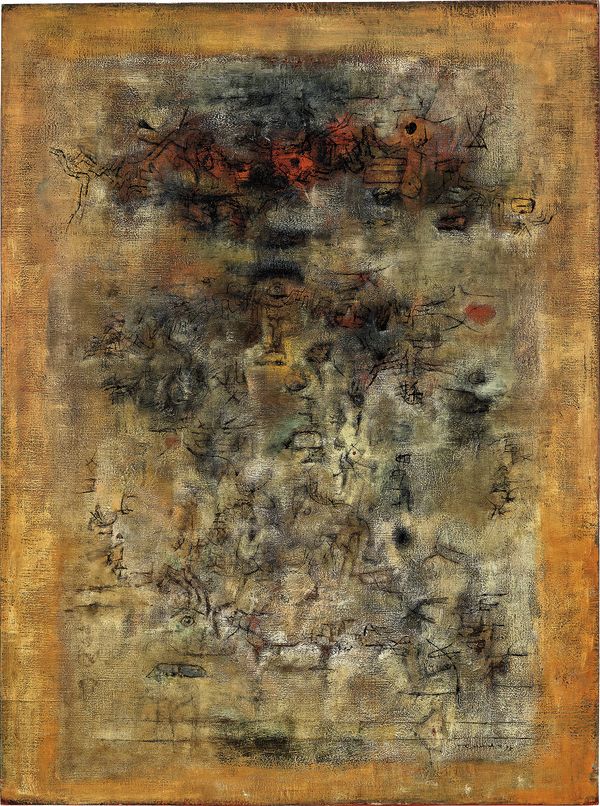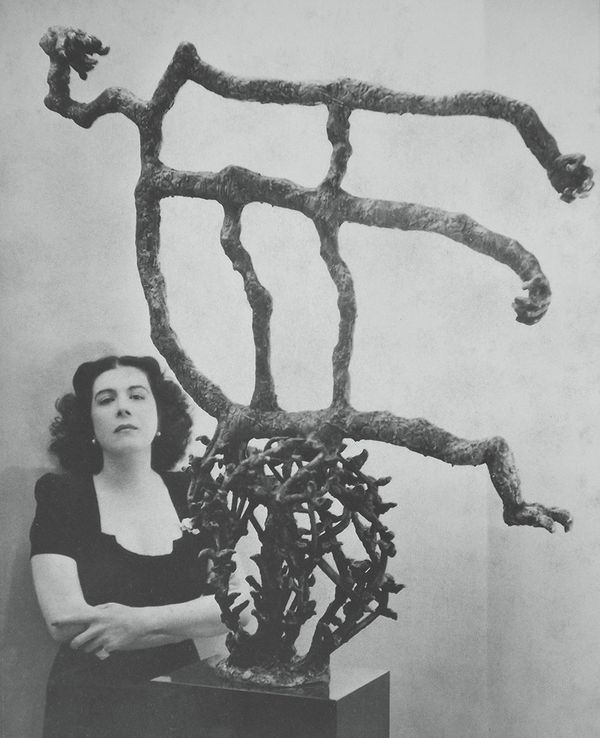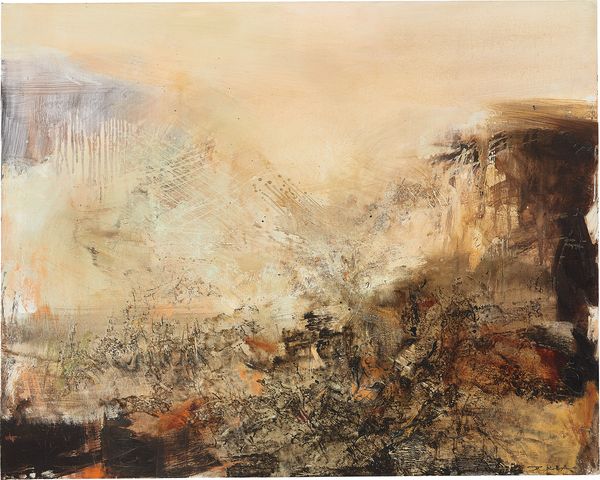Zao Wou-Ki Ailleurs, 1955
Inspired by the works of Modern masters such as Paul Cézanne and Henri Matisse, Zao Wou-Ki arrived in Paris in 1948. Around the mid-1950s, Zao's artistic style underwent a tremendous transformation as he was seeking to invent a language that will no longer be confined by the choice of the subject. After having been briefly influenced by Paul Klee, he began to renounce the representational in his art in 1955, instead returning to his cultural roots with the incorporation of ancient Chinese hieroglyphic scripts found on oracle bones into his works.
Oracle Bone, between 1600 BC and 1050 BC, Collection of the British Library
During his ‘oracle bone’ period, Zao was inspired by the spirituality of these ancient inscriptions. Rather than simply depicting these inscriptions, Zao dissected, re-organised and created unique scripts and symbols of his own. By then, the artist had completely abandoned figurative painting, and now concentrated solely on abstraction. The imagery present in his works became increasingly liberated— his use of colour and light fluid and rhythmic. The present work, Ailleurs, (lot 13) was completed in 1955 – during that key moment when Zao’s style of painting underwent a crucial and decisive transformation.
Maria Martins and her work Ma Chanson, 1944, Collection of Wadsworth Atheneum Museum of Art Collection, Hartford
Ailleurs was originally in the collection of the Brazilian Surrealist sculptor Maria Martins (1894-1973), who acquired the work during her visit to Zao’s studio in the late 1950s. Martins, along with her diplomat husband, travelled extensively and lived in many different countries. She helped to establish the São Paulo Art Biennale. In 1955, Zao was invited to participate in the Biennale’s third edition where his works were exhibited in the French Pavilion. It was through this occasion that two artists became friends. For the next sixty years, this work remained in the treasured collection of Martins and her family.
Zao Wou-Ki 14.09.1970, 1970
14.09.70 comes from a French private collector who shared a deep friendship with Zao Wou-Ki over several decades. The collector first came across Zao’s works at the artist’s Galerie de France exhibition circa 1970, and subsequently visited Zao’s studio where, drawn by the beauty of the work, he acquired it. Fresh to the market, 14.09.70 has since been in the home of this private collector.
Painted in 1970, 14.09.70 exhibits the characteristics of Zao’s endeavours within a period of embracing ink painting aesthetics in his oil canvases. The composition of 14.09.70 is an artful, angled trisection evoking an abstract landscape of rising mist above expansive riverbanks and mountains, reminiscent of the liubai (‘to leave blank’) aesthetic of Chinese ink painting. Zao’s concern with nature is to capture its state and environment as an emotional or experiential one rather than a literal one, and can be likened closely to the tradition in Chinese classical landscape painting of capturing the impression of nature, rather than a factual representation. Through this work Zao utilises colours to represent the sense of consolation, shelter and reprise, and incorporates the xieyi approach in Chinese ink paintings with the boldness of Western modernism.
Zao Wou-Ki 22.05.2002, 2002
22.05.2002 is from a collection spanning nearly four decades, one which features a singular preoccupation on fine art created by the world’s most renowned Asian artists that resided and worked in postwar Europe. 22.05.2002 (like all of Zao’s mature works, named after the date it was completed) is a beautiful example of how Zao’s artistic and personal journey culminated in a sublime, even spiritual, dynamism in his works.
The canvas is suffused with light, the warm glow of spring tempered with rich, earthy soil. His characteristic diluted ink wash-like oils sweep across the canvas, grounded by subtle painterly gestures reminiscent of the Chinese oracle bone script which appeared in his earlier works (see for example lot 13 Ailleurs, 1955). But the youthful energy of earlier abstract works has evolved into a search for a more profound, nuanced inner landscape, the same kind eulogised by Chinese literati painters through the ages.
Enriched by his artistic encounters both in the East and West, throughout his career Zao had come to embody the meaning of his given name, Wou-Ki – an artist with ‘no limits’.




